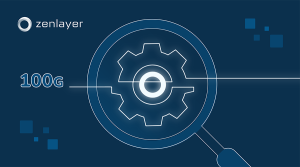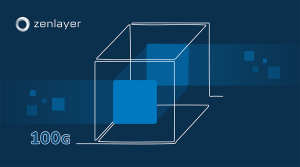As you might already know, internet protocol version 4 (IPv4) addresses are in increasingly short supply. What will your business do when you can’t secure any IPv4 addresses to expand your operations or services? The answer is internet protocol version 6 (IPv6). More accurately, it’s a dual stack network that can reach both IPv4 and IPv6 content.
While IPv4 still dominates the market today, IPv6 adoption is accelerating. IPv6 will eventually take over as the new standard as more businesses make the jump. That’s why all our Bare Metal Cloud instances now come with default IPv4 and IPv6 addresses. We want to give you the opportunity to take advantage of new IPv6 technologies to deliver innovative applications and services without disrupting your existing IPv4 infrastructure. This way, you have the flexibility to cover the entire IP address market while you transition at your own pace.
What are IPv4 and IPv6?
Internet protocol (IP) is a communication method that identifies and routes all traffic on the internet. IPv4 is the fourth version of the internet protocol established in 1983 and serves as the original format for all IP addresses. At the time, the internet’s architecture limited the total number of addresses to under 4.3 billion. There were 4.6 billion people in the world and most of them weren’t connected to the internet, so the limitation didn’t seem like a big deal.
Fast forward to 2022, the world’s population now hovers around 7.8 billion and climbing. There are not enough IPv4 addresses to go around. In fact, the last remaining addresses in the available pool were allocated on November 25, 2019. While unused IPv4 addresses can be and are recycled, this strategy lacks sustainability with the explosive pace of global advancement and soaring number of ecommerce businesses.
The Internet Engineering Task Force (IETF) foresaw this problem and in 1998 developed the 128-bit IPv6 addresses to combat the exhaustion of 32-bit IPv4 addresses. IPv6 is the most recent version of the internet protocol and improves upon IPv4 in several ways that you’ll find out below.
What are the advantages of IPv6 over IPv4?
More efficient routing
Due to the staggering amount of public IPv4 addresses in use, IPv4 routing tables are massive and fragmented, which leads to inefficient routing. IPv6 allows for route aggregation (combining several routes into a single, inclusive route) by mandating the use of addresses given by service providers. As a result, IPv6 addresses that share a 48-bit global routing prefix from a service provider are routed together. This reduces the size of the routing tables and makes it easier to route traffic more efficiently.
Better traffic handling
An IPv6 header uses a 4-bit field that lets the source define the delivery priority of its sent packets. The nodes (data centers, offices, or any other location with internet connectivity) and routers in its path will then use this field to determine whether to drop the packet, or to accept and send it along.
Besides the priority field, IPv6 also introduced flow labels to enable further fine-tuning of traffic handling. Flow labeling lets the source define other specific ways that it wants its sequence – or flow – of packets to be handled by routers on its path to the destination.
These Quality-of-Service (QoS) capabilities are particularly important for real-time applications like video conferencing, online gaming, and internet of things (IoT), or everyday objects embedded with internet-connected technology, like smart light bulbs.
Stronger protection
Malicious actors often scan for IP addresses to scope out vulnerabilities in outdated services, compromised applications, etc. running on targeted systems as part of their reconnaissance. They then use the findings to propagate worms (installing malicious self-replicating applications), steal passwords, delete critical data, and even mess with system files and settings.
If you’ll recall from above, IPv4 contains just shy of 4.3 billion (2^32) addresses, which takes less than an hour to scan using easily accessible online tools. IPv6 brings the total up to over 340 undecillion (2^128) – or 340 trillion trillion trillion addresses – making it virtually impossible for hackers to scan and successfully complete their reconnaissance. For the curious, scanning the entire IPv6 address pool would take billions of years!
How do I start using IPv6?
We offer free IPv6 addresses to Bare Metal Cloud customers in the vast majority of available locations –wherever the local carrier supports IPv6.
If you’re currently subscribed to Bare Metal Cloud and want to use IPv6 with your existing instances, simply talk to our solution experts and they’ll allot you a /64 block (containing 18 billion billion) of IPv6 addresses per instance.
If you’re provisioning a new instance through zenConsole, you’ll be automatically assigned an IPv6 address block along with your default IPv4 address.
New to Zenlayer Bare Metal ? Check it out now!
Instantly deploy your applications on high-performance, dedicated physical servers close to your users – now available in 59 cities across 6 continents.
If you’ve never used our bare metal, check it out! Delight your users with lower latency, and smoother, more responsive experiences. Sign up for our self-service zenConsole or contact our sales team to get started!







